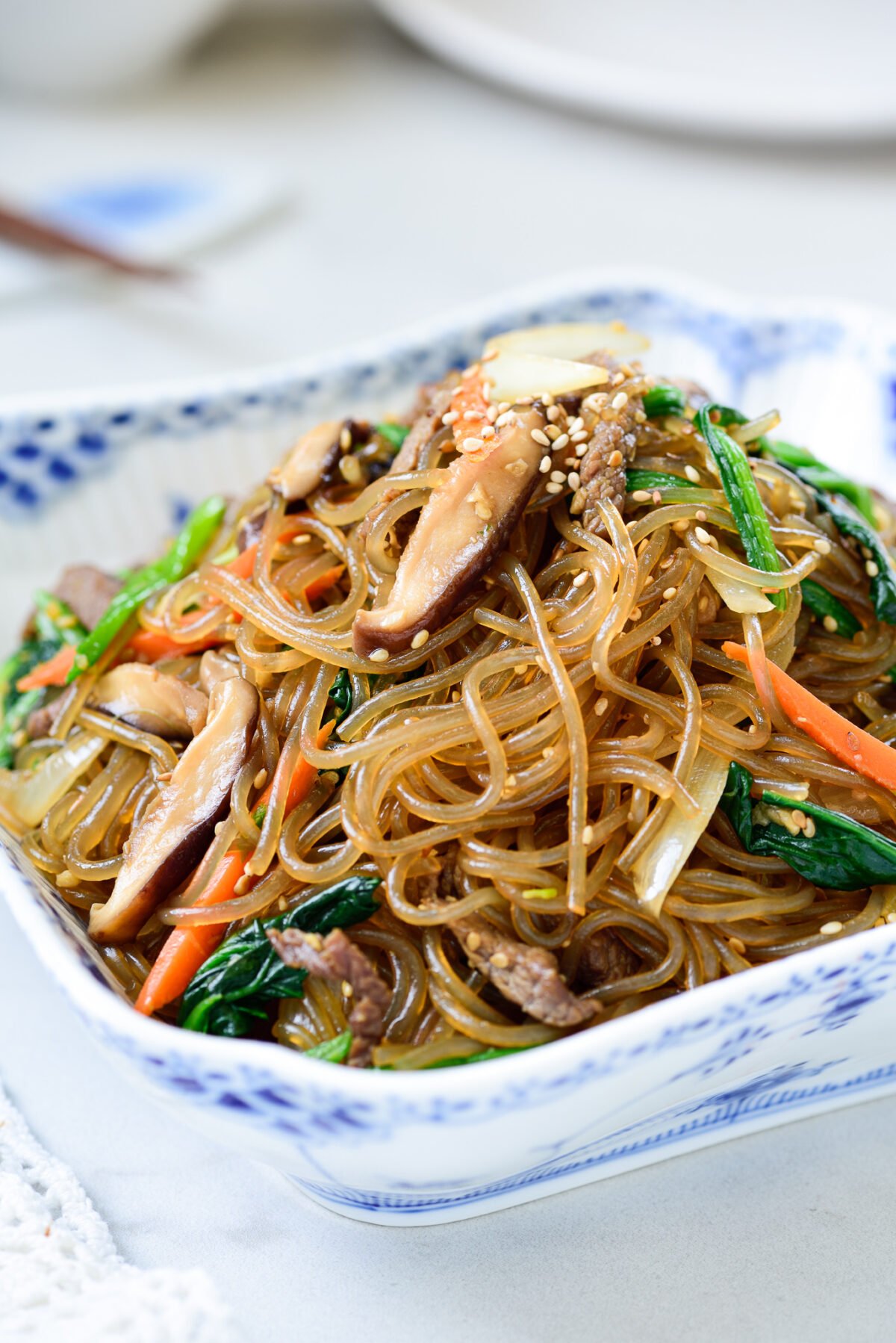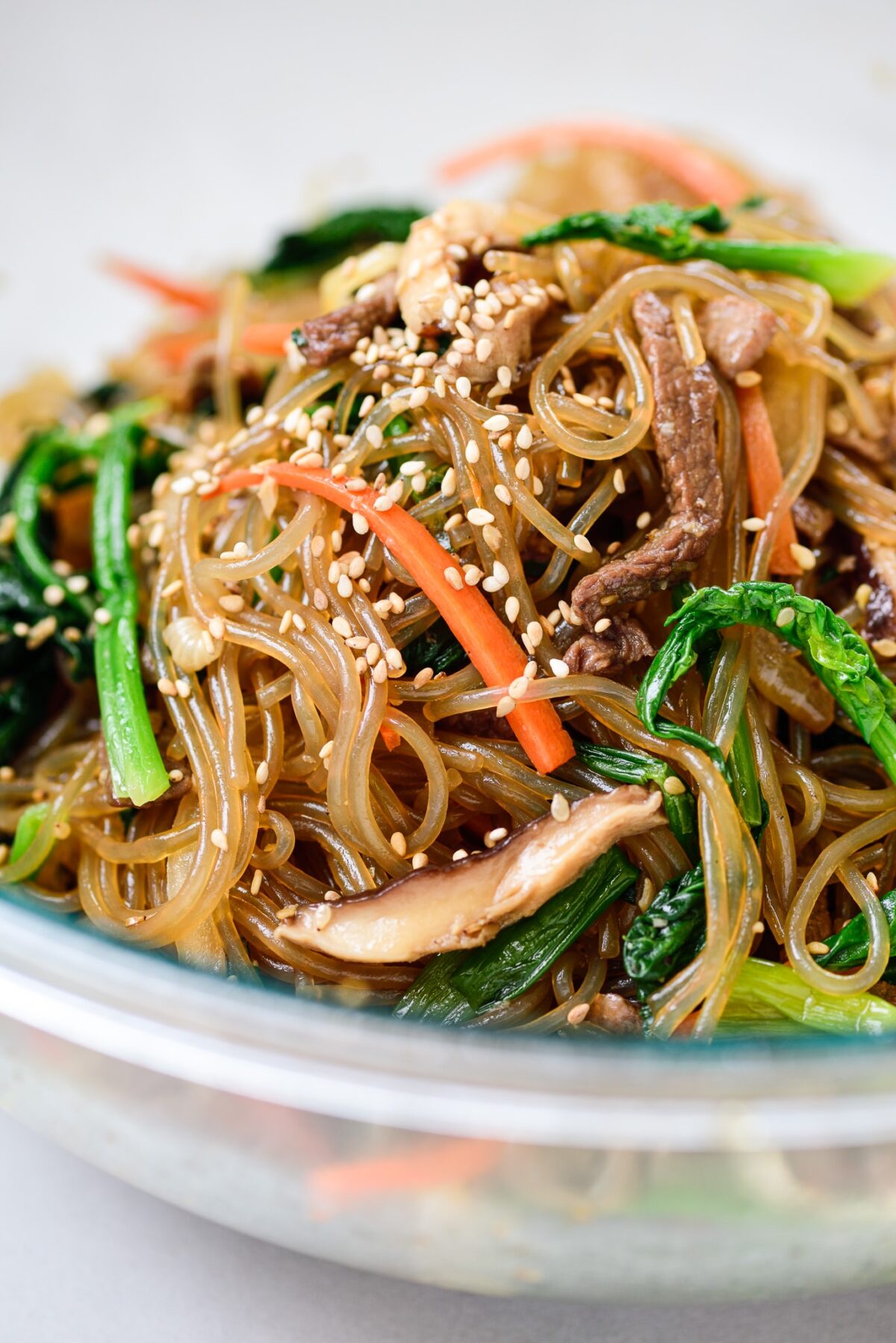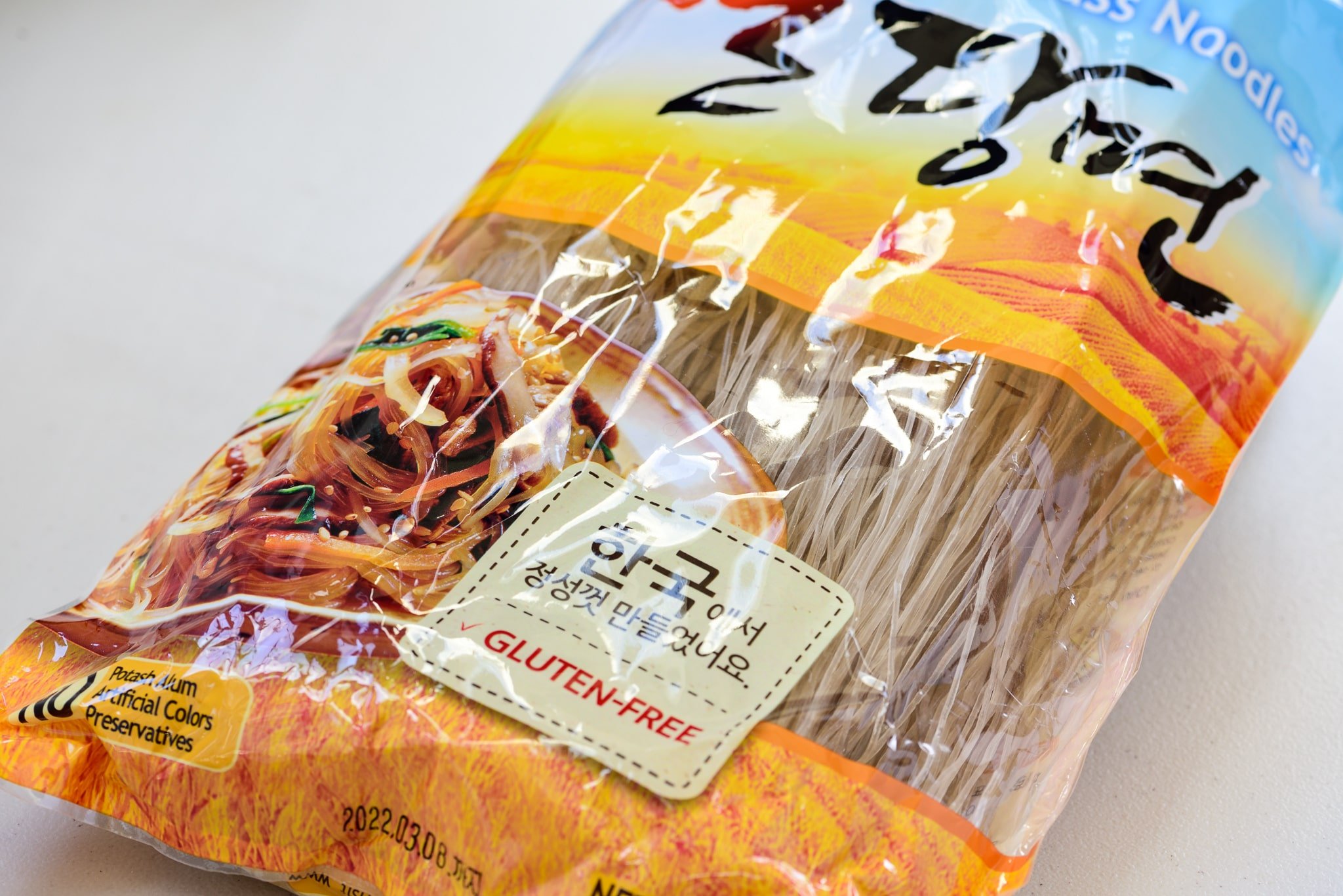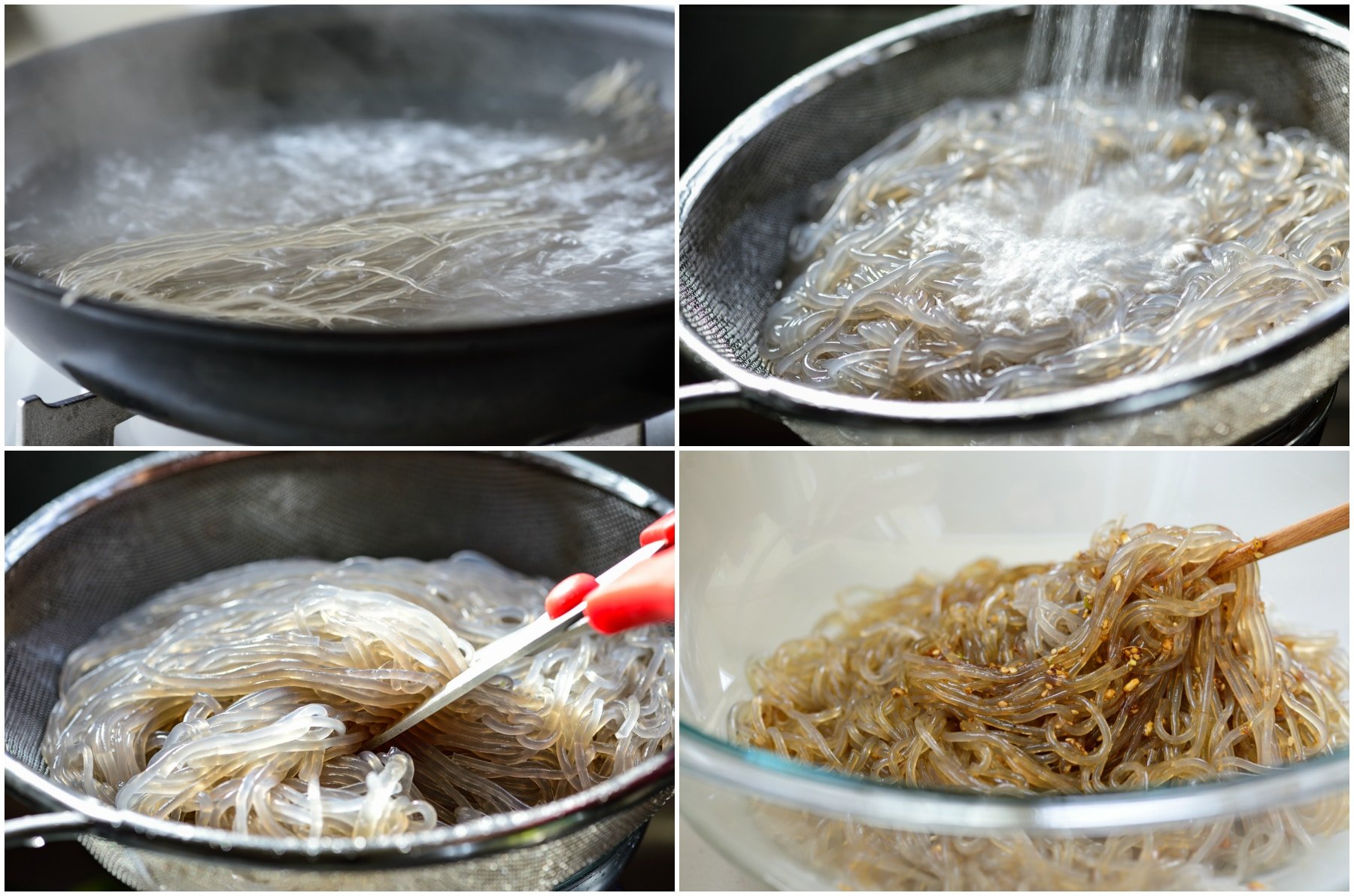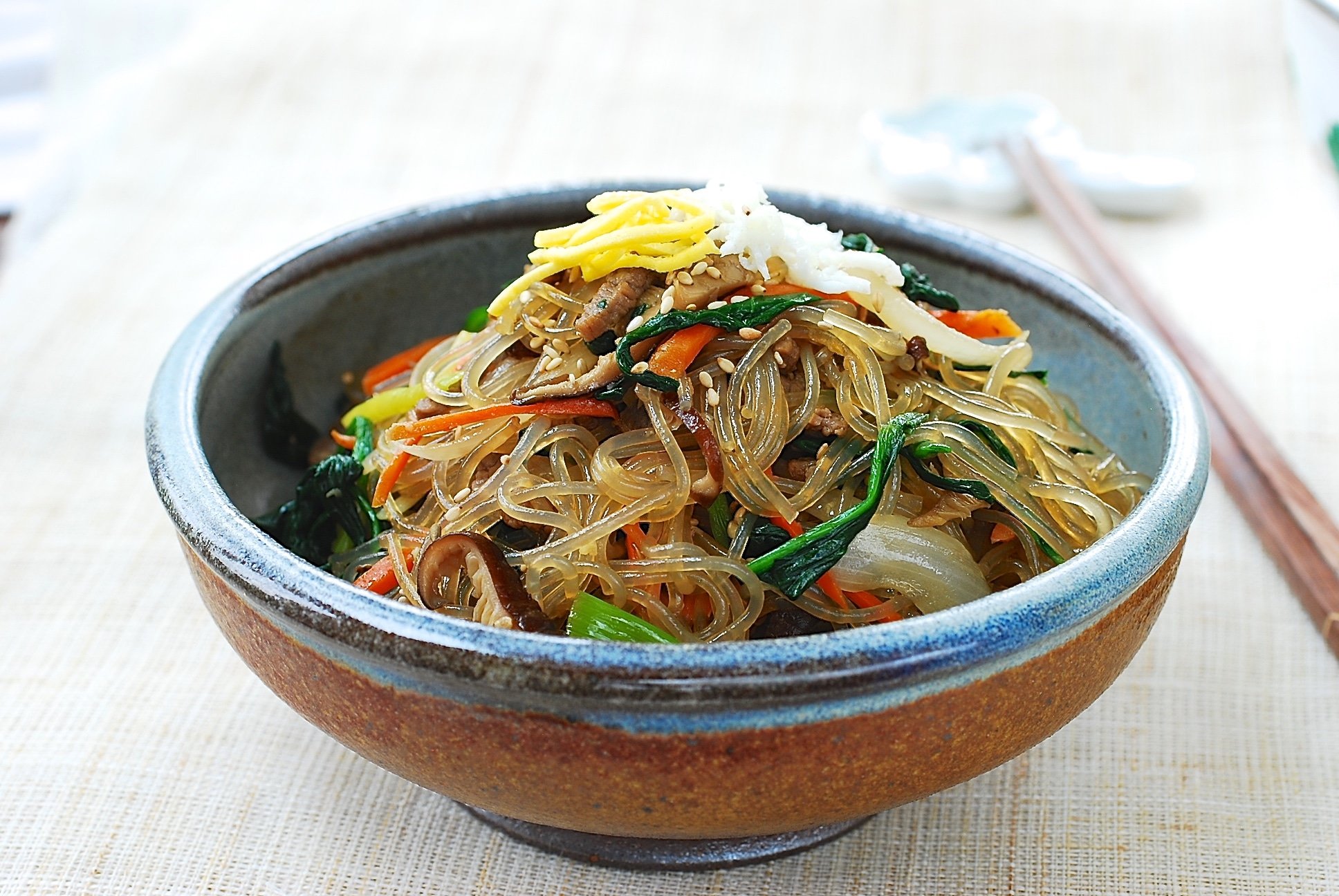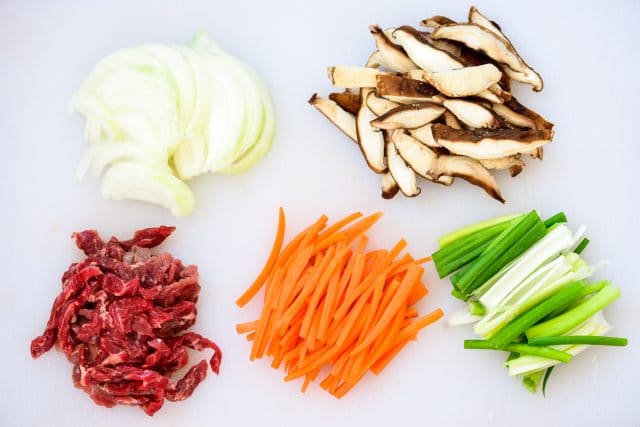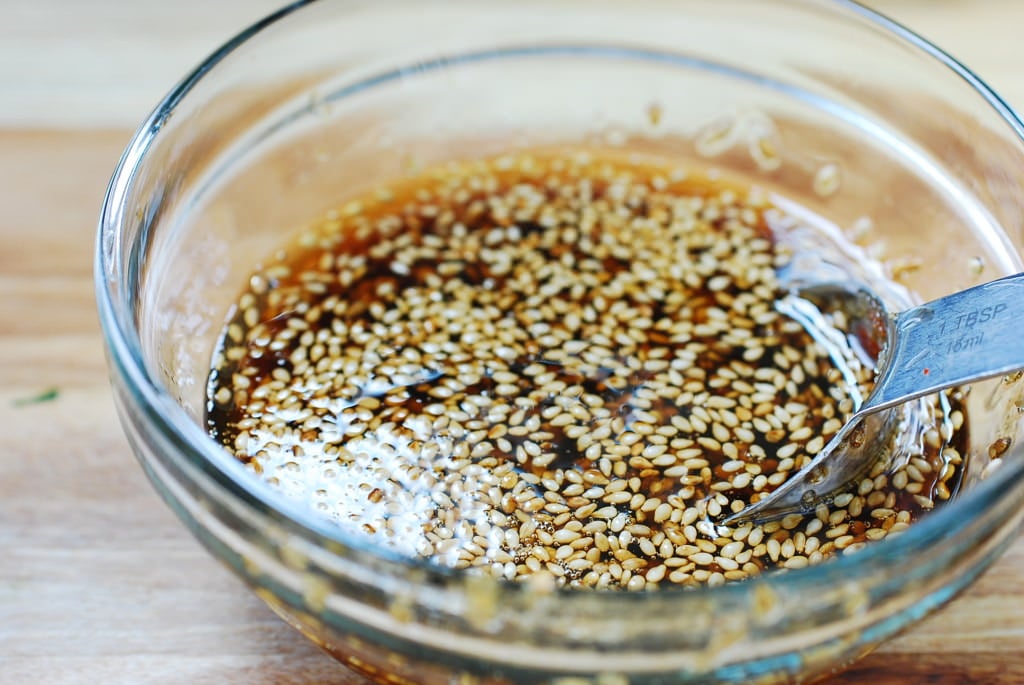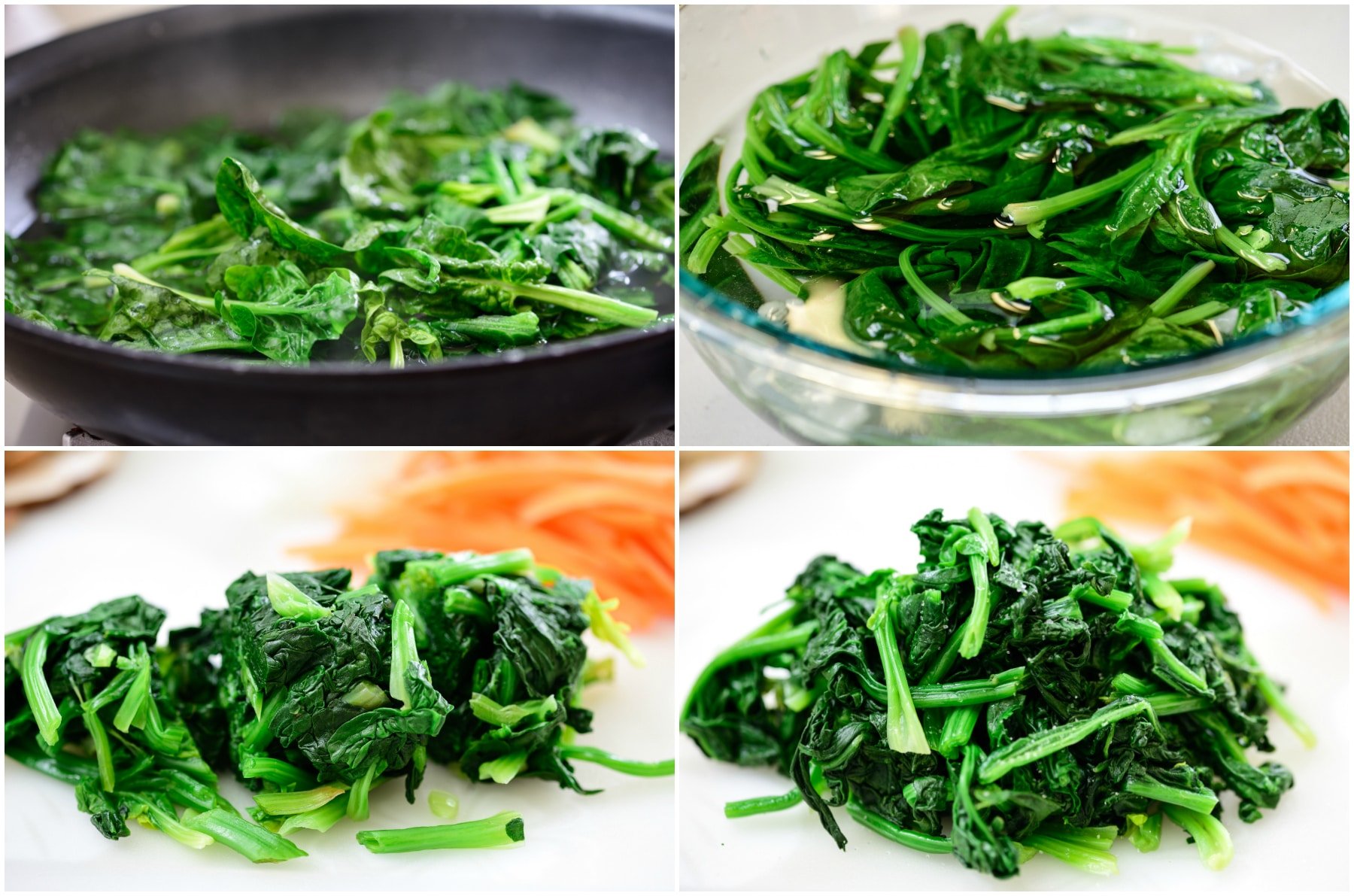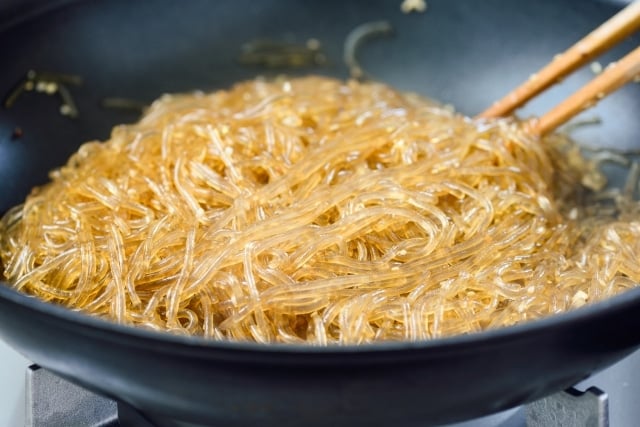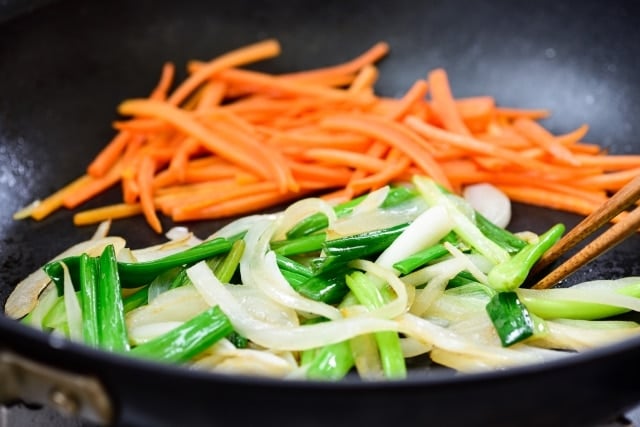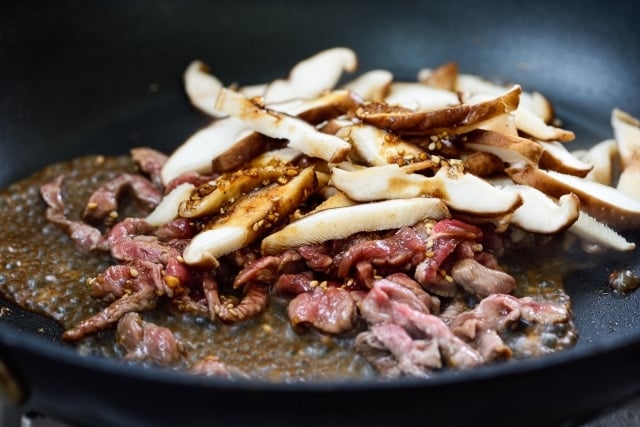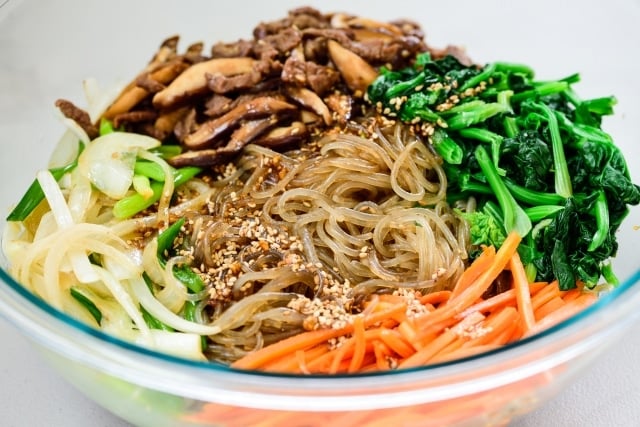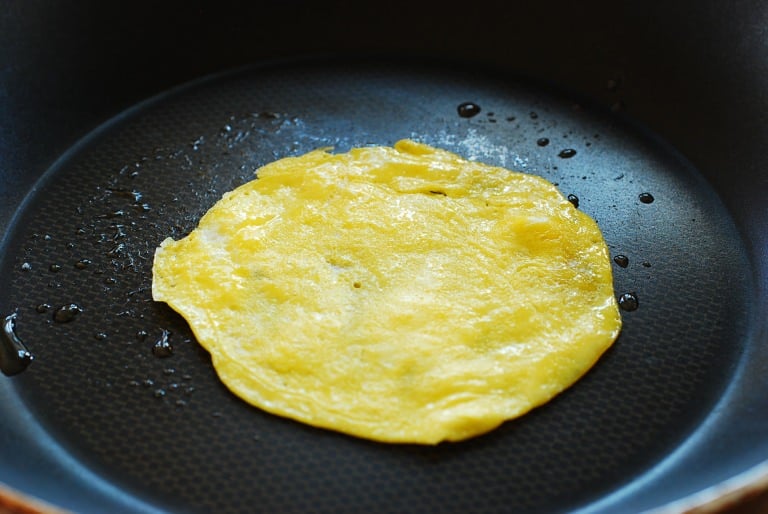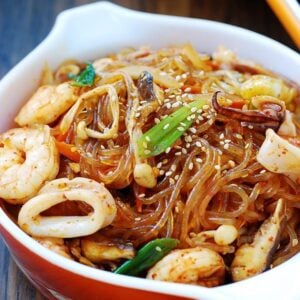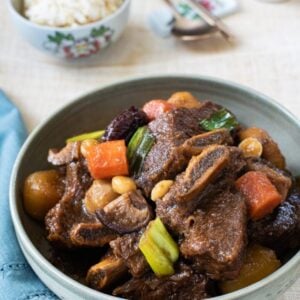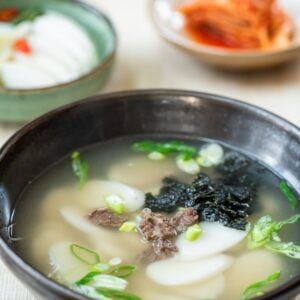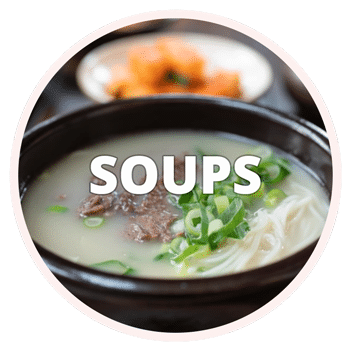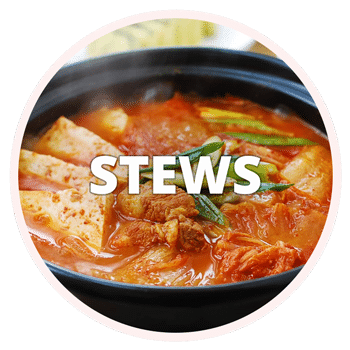What is japchae?
Japchae (잡채) literally means “mixed vegetables.” However, the main ingredient of this classic dish is Korean sweet potato starch noodles (dangmyeon, 당면), also known as glass noodles. Japchae is an essential dish for traditional holidays and special occasions.
There are many variations using different ingredients, such as Spicy Seafood Japchae and Kongnamul Japchae.
For traditional japchae, the chewy and springy noodles are nicely paired with thin strips of beef (or pork) and various vegetables in a slightly sweet and savory sauce. It’s also common to add an egg garnish (jidan, 지단). Sometimes, I also sprinkle with some finely chopped pine nuts.
To make vegan japchae, simply omit the meat and add a little more mushrooms or other vegetables. Pan-fried tofu is also an excellent substitute for the meat.
Serve it as an appetizer or a side dish or over a bed of rice to make it a main dish.
How to make japchae
Noodles:
Sweet potato starch noodles (dangmyeon, 당면) are a staple in Korean homes. I always have a couple of bags in my pantry. They are not only used for this iconic dish, but also great in soups and stews.
There are various ways to prepare japchae noodles. Some people presoak the noodles before cooking them. Some don’t rinse the noodles after cooking. Even the package instructions vary, depending on brands. I don’t find it necessary to soak the noodles. The noodles cook up pretty fast without being soaked. I boil for about 8 minutes until the noodles are soft and elastic. These noodles should NOT be “al dente!”
I then rinse the noodles in cold water, drain well, marinate with the prepared sauce, and then pan-fry to give them a soft yet bouncy texture.
Meat and vegetables:
I usually use lean, tender beef but pork loin is also very common in japchae. The classic vegetable additions are carrots, spinach, mushrooms, onions and scallions. Other common vegetable options are chili peppers, bell peppers, garlic chives, cucumbers, etc.
Shiitake (pyogo beoseot, 표고버섯) and wood ear mushrooms (mogi beoseot, 목이버섯) are most typical in this dish, but oyster mushrooms (neutari beoseot, 느타리버섯) are also commonly used.
The japchae ingredients are separately cooked and combined at the end into a deliciously colorful dish. This traditional method is what makes this dish so special! Once you have the meat and vegetables prepared, it really doesn’t take much time to cook.
Here, I’ve streamlined the process a little and cook some ingredients together, where appropriate. Regardless, do not overcook the vegetables. The vegetables should be slightly crunchy or “al dente” to pair well with soft noodles.
Seasonings:
The real secret to successfully creating the authentic flavor of this dish is to find the right balance between soy sauce and sugar. This japchae recipe will give you that right balance! Be sure to proportionately increase the sauce amount if you’re using more ingredients than the amounts called for in the recipe.
To make the process a little easier, I make a bowl of sauce first to be used throughout the cooking process. Use brown sugar, if available, for color and a bit extra flavor.
How to store leftovers
Leftover japchae should be kept refrigerated. It will keep well for 3 to 4 days and reheat nicely in the microwave. The noodles will get soft and chewy again when reheated.
More japchae recipes
Spicy seafood japchae
Kongnamul japchae (Soybean sprout japchae)
Watch how to make it
For more Korean cooking inspirations, follow along on YouTube, Pinterest, Twitter, Facebook, and Instagram.
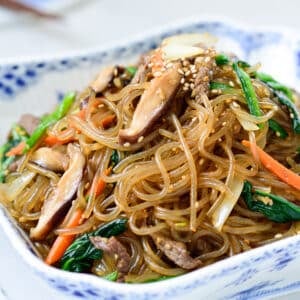
Japchae (stir-fried starch noodles with beef and vegetables)
Appetizer, Side DishIngredients
- 7 ounces Korean potato starch noodles (dangmyeon, 당면)
- 1 carrot (about 3 ounces)
- 1/2 medium onion, preferably sweet variety, (4 to 5 ounces)
- 2 scallions
- 4 ounces lean tender beef (sirloin, chuck tender, rib eye, etc.) or pork loin
- 3 to 4 ounces fresh shiitake mushrooms (or 4 to 5 dried shiitake, soaked until plump) Or oyster mushrooms, wood ear mushrooms or button mushrooms. See note 1.
- 6 ounces fresh spinach (preferably a bunch of spinach)
- oil for stir frying
- salt
- egg garnish (jidan) - optional
Sauce
- 3.5 tablespoons soy sauce
- 3 tablespoons sugar (or brown sugar) You can use a little less if you want.
- 2 tablespoons sesame oil
- 2 teaspoons minced garlic
- 1 tablespoon roasted sesame seeds
- black pepper to taste
Instructions
- Clean all the ingredients. Cut the carrot into matchsticks. Thinly slice the onion. Run the knife through the white parts of the scallions lengthwise, if thick, and then cut into about 2-inch long pieces. Remove the stems from the mushrooms, and slice into 1/4-inch thin strips. Cut the meat into thin 2-inch long strips.
- Combine all the sauce ingredients in a small bowl and mix well until the sugar is dissolved.
- In a large non-stick pan (see note 2), bring about 5 cups of water to a boil, and cook the noodles until completely translucent and soft (6 to 8 minutes). Drain in a strainer and rinse under cold running water. Drain well. Roughly cut the noodles with a pair of kitchen shears or a knife into 6 -7 inch lengths. Transfer to a large mixing bowl. Mix well with 3 tablespoons of the prepared sauce.
- Fill the same pan with 2 cups of water. When water boils, blanch the spinach only until wilted. Drain quickly and shock in cold water. Squeeze out water, run a knife through the squeezed spinach a couple of times, and lightly season with salt.
- Add 1/2 tablespoon of oil to the skillet, and stir fry the noodles over medium to medium high heat, stirring frequently, until translucent and a bit sticky (about 4 minutes). Transfer back to the mixing bowl.
- Add 1/2 tablespoon of oil to the pan, and stir fry the carrot over medium high heat, sprinkling with a pinch of salt. When the carrot sticks are half way cooked, about a minute, push them to one side of the pan to make room for the onion slices. Stir-fry the onion slices until translucent, sprinkling with a pinch of salt. Stir-in the scallion and cook briefly. Do not overcook. The vegetables should be crisp. Transfer to the bowl with the noodles.
- Add the beef and mushrooms along with 2 tablespoons of the prepared sauce and cook until the meat is cooked through, 2 - 3 minutes. Transfer to the bowl with the noodles.
- Add the spinach and the remaining sauce to the bowl with all other prepared ingredients. Toss well by hand. Adjust the seasoning to taste by adding a little more (start with 1/2 teaspoon) soy sauce and/or sugar as necessary.
Optional egg garnish
- Separate the egg white and yolk. Lightly beat the white by gently cutting it with a spoon. Stir the yolk with a spoon until smooth. Heat a lightly oiled nonstick skillet over medium low heat. Pour each egg part into a thin layer, by tilting the skillet and/or spreading with a spoon. Cook each side briefly. (Do not brown the egg.) Roll it and thinly slice.
Notes
- Shiitake and wood ear mushrooms are typical for japchae. Dried shiitake has a concentrated flavor and meatier texture. You can use any kind of fresh/dried mushrooms such as oyster mushrooms or button mushrooms.
- In this updated recipe, you'll use the same pan for cooking the noodles and spinach and for stir-frying the noodles and other ingredients.
- Leftover japchae should be kept refrigerated. Japchae reheats well in the microwave. The noodles will get soft and chewy again.


